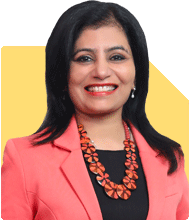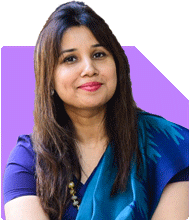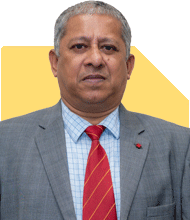Archana Deshpande | Answer |Ask -Follow
Image Coach, Soft Skills Trainer - Answered on May 20, 2024
She has been working with individuals and corporate organisations for more than 10 years during which she has helped professionals and students improve their soft skills, build confidence and enhance self-esteem.
An engineer from the PDA College of Engineering, Gulbarga, Archana had a successful career at Reliance Communications. But she has always been interested in teaching and training people. So she pursued a postgraduate diploma in teacher’s training at Pune’s Symbiosis Institute of Management Studies followed by teaching assignments in schools at Visakhapatnam and Mumbai.
Archana also holds an international certificate in image consulting and soft skills training from the Image Consulting Business Institute, Mumbai.... more

Please help me out on how can I manage my time schedule along with side bsc
I really want you to elaborate a little more.
I am assuming you are a working professional who is pursuing a BSc on the side and suggesting a few time management ways to help you...
List out all your tasks and activities in a day and over a period of two weeks. See how you are managing your time now by making a matrix of time for every 1/2 hour. Be accountable to every 1/2 hour, write down what you did every half hour.
It will be an eye opener on how you are spending your time.
There will be some activities that come under "should do" on your list, for example studying for your BSc, physical activity, eating food, etc.... schedule them and work all other activities around it. Keep life simple Barua and you'll be able to achieve much more. Focus on doing right and focus on your well being!!
All the best!!
You may like to see similar questions and answers below
Aruna Agarwal | Answer |Ask -Follow
Child and Parenting Counsellor - Answered on Aug 02, 2023
Nayagam P P |10849 Answers |Ask -Follow
Career Counsellor - Answered on Jun 06, 2024
Archana Deshpande | Answer |Ask -Follow
Image Coach, Soft Skills Trainer - Answered on Dec 13, 2024
Prof Suvasish Mukhopadhyay | Answer |Ask -Follow
Career Counsellor - Answered on Jun 24, 2025
Nayagam P P |10849 Answers |Ask -Follow
Career Counsellor - Answered on Jul 11, 2025
Dr Dipankar Dutta |1836 Answers |Ask -Follow
Tech Careers and Skill Development Expert - Answered on Dec 05, 2025
Ulhas Joshi |280 Answers |Ask -Follow
Mutual Fund Expert - Answered on Dec 05, 2025
Dr Dipankar Dutta |1836 Answers |Ask -Follow
Tech Careers and Skill Development Expert - Answered on Dec 04, 2025
Ravi Mittal |676 Answers |Ask -Follow
Dating, Relationships Expert - Answered on Dec 04, 2025
Anu Krishna |1745 Answers |Ask -Follow
Relationships Expert, Mind Coach - Answered on Dec 04, 2025
Anu Krishna |1745 Answers |Ask -Follow
Relationships Expert, Mind Coach - Answered on Dec 04, 2025
Mayank Chandel |2562 Answers |Ask -Follow
IIT-JEE, NEET-UG, SAT, CLAT, CA, CS Exam Expert - Answered on Dec 04, 2025
Mayank Chandel |2562 Answers |Ask -Follow
IIT-JEE, NEET-UG, SAT, CLAT, CA, CS Exam Expert - Answered on Dec 04, 2025
Mayank Chandel |2562 Answers |Ask -Follow
IIT-JEE, NEET-UG, SAT, CLAT, CA, CS Exam Expert - Answered on Dec 04, 2025
Mayank Chandel |2562 Answers |Ask -Follow
IIT-JEE, NEET-UG, SAT, CLAT, CA, CS Exam Expert - Answered on Dec 04, 2025




























